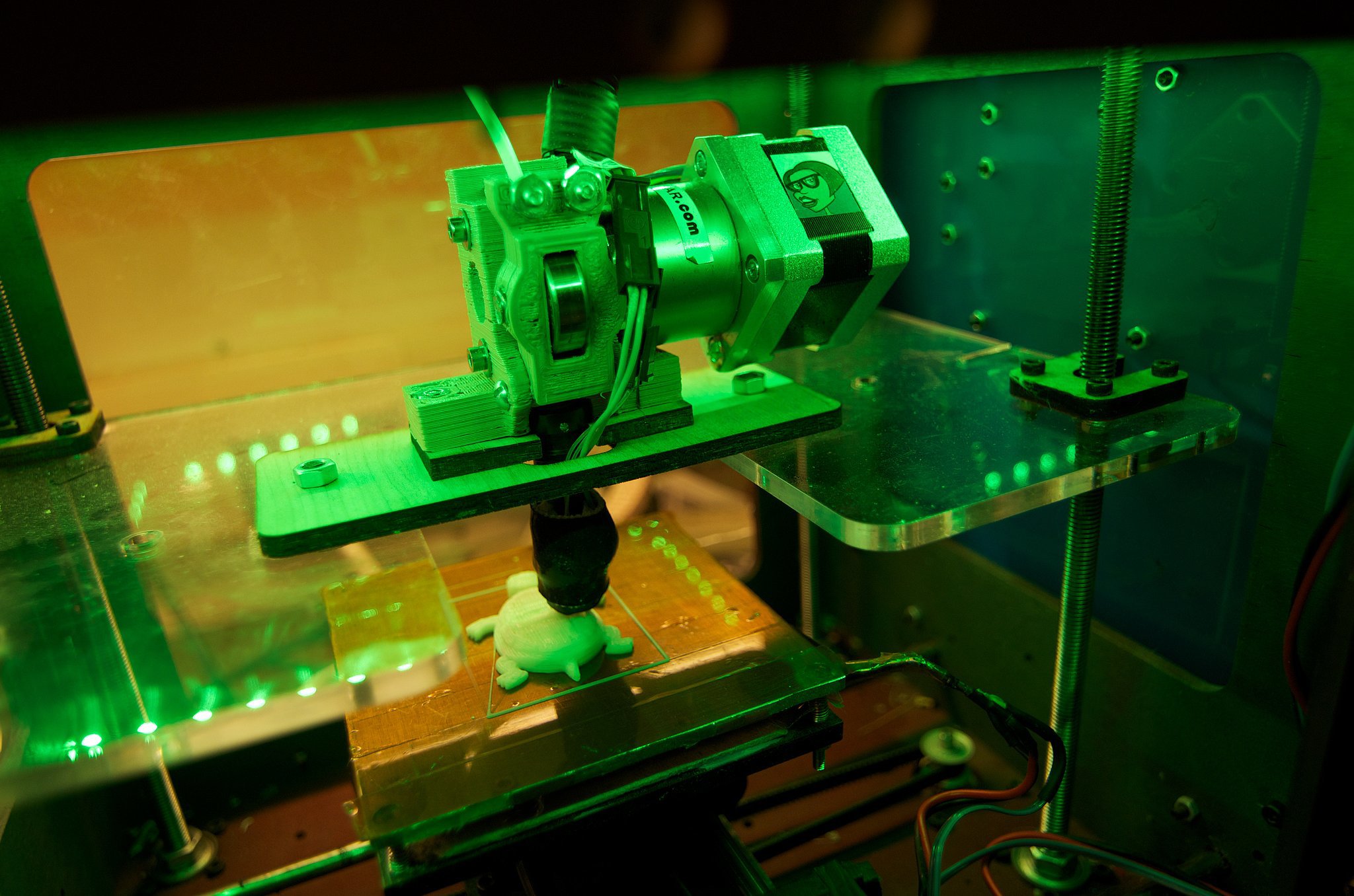By Lauren Orsini
![]()
When it comes to 3D printing, there are two types of people.
There are those who say, “How convenient! I can 3D print new paper clips whenever I run out. And it only takes two minutes to print each one!”

And there are those who say, “I can order 1,000 paper clips on Amazon Prime and have them arrive tomorrow—no expensive machine required.”
But devotees and skeptics alike get one thing right: 3D printing continues to sit at the juncture between novelty and practicality. It makes sense for some uses, but hasn’t yet proven itself to be a technology we can’t live without.
Even the most cynical of us can acknowledge that 3D printing is capable of change on a global scale. 3D printing could boost manufacturing productivity [1] if warehouses adopt it. On the medical front, it’s already being used to create functional, affordable prosthetics [2] in Uganda.
At the Consumer Electronics Show this January, companies showed off their 3D-printed wares like useless plastic tzotchkes, models, and toys. But once the gimmick of printing something out of plastic wears off, the question remains—why do we need these in our homes again?
Larry Crenshaw [3], AT&T's "director of strategic messaging," told ReadWrite his company invested in a relationship with 3D printing company Cubify because it strongly believes that a more useful era of 3D printing is already on the way.
“Today it’s novelty, tomorrow it’s tools and things you need,” Crenshaw said.
3D Printing Comes Home
At AT&T’s Innovation Center in Washington D.C., Crenshaw demoed the Cubify [4] for a group of reporters, including me. He passed around a juicer, a paper clip, labeled plant stakes, and other minor practical objects for us to see. He also passed around models of the Washington Monument, which admittedly, weren't practical in the slightest.
The reason companies rarely demo functional 3D prints, he said, is because they take a long time to create, and sometimes, they consist of multiple parts that later need to be fused together. The more time you’re willing to spend on 3D part printing and assembly, the more practical a 3D printer starts to become.
These plans all came from Thingiverse [5], Makerbot’s hub for free, Creative Commons-licensed 3D models. Anyone with a 3D printer can create anything from the site: Thingiverse has a section for household goods [6], as well as one for more challenging [7], multi-part models with larger payoffs like cameras and functional robots. Now that newer 3D printer models have dual cartridges [8], it's possible to print multicolored objects and, eventually, multi-fiber objects out of materials other than plastic.
It's important to realize that to get something truly useful out of a 3D printer, it requires your own labor and time—from adjusting models to specific sizes or shapes, to printing multiple pieces and then assembling them. 3D printing is certainly no Star Trek replicator, spitting out fully formed, complicated items in a matter of minutes—at least not yet.
For this reason, it's easy to see why the emerging technology of 3D printing seems like a step into the past. It could be difficult for companies to grasp why anyone, aside from makers or hobbyists, would want a device that requires so much effort on the user's part. 3D printing does not immediately meet customers' every need, at least by default, so its tempting to say that it never will.
But time and again, we've seen large corporations reject emerging technologies simply because they're not there yet.
In "Disruptive Technologies: Catching the Wave [9]," authors Joseph L. Bower and Clayton M. Christensen note that Xerox let Canon create small desktop copiers because it couldn't imagine why customers would need them. Granted, back then, desktop scanners were slower and clunkier than they are today, but it still seems like a huge oversight considering that hardly any of us still use the oversized copiers of the past. The lesson here is that large companies aren't always right about technologies, and what they consider "novelties" could turn out to be the next big thing.
Crenshaw brought up the example of cell phone texting: Once the realm of tweens, texting was seen as a step backward in technology from talking on the phone. But it soon became so popular, even corporations now embrace SMS.
“It was a trend with tweens, but companies looked down on it,” he said. “Now, everyone texts. Will 3D printing follow the same roadmap? It could be.”
My guess for the "hidden use" of 3D printing? Absolute and total customization.
We're all different people with different needs; why shouldn't our physical stuff be just as original as we are? Sure it's easier to order paper clips from Amazon Prime today. But perhaps my personal inclinations might sway me toward printing office supplies in a variety of shapes, sizes, and colors that fit me and my tasks perfectly. Perhaps the new luxury will be to tailor our things the way celebrities tailor each and every one of their outfits.
As 3D printing becomes cheaper and faster—today it took Crenshaw one hour and twenty minutes to print this hollow citrus juicer [10] — the cult of convenience won't even need to make way for the cult of personalization. And once you've gotten used to literally creating your environment according to your exact specifications, it could be hard to go back to wearing the same jewelry [11] and buying the same interior furnishings as everyone else on the block.
You should never underestimate the human ego. And that's exactly why it's foolish to underestimate 3D printing.
Related Links
Apple TV: The fun little experiment is getting serious [12]
Nintendo loves mobile — it just won't release games for smartphones [13]
Steel Yourself: A new Pebble smartwatch is on its way [14]
Terminator no more: Google Glass gets a makeover [15]
Facebook attempts to reimagine how you read the news [16]